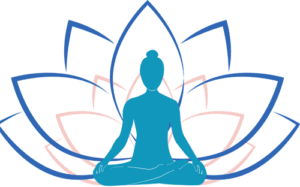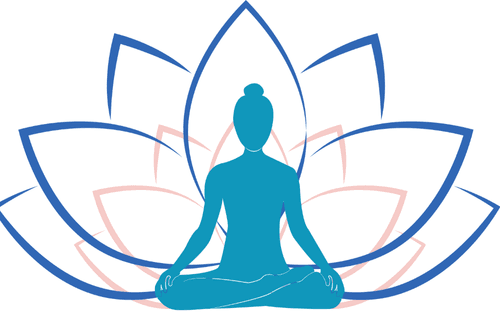A Comprehensive Yoga Class Guide for Stress Relief and Relaxation
Understanding the Science of Stress Relief Through Yoga
Yoga for Stress Relief and Relaxation Stress is a pervasive issue that affects individuals both physiologically and psychologically. When faced with stress, the body enters a state commonly referred to as “fight or flight,” which triggers the release of stress hormones, especially cortisol. Chronic exposure to elevated cortisol levels can lead to numerous health problems, including anxiety, depression, and cardiovascular issues. Recent scientific studies have illuminated how yoga can play a pivotal role in alleviating stress and promoting overall well-being.
Yoga, as a holistic practice, encompasses a combination of physical postures (asanas), breathing techniques (pranayama), and mindfulness, all of which contribute significantly to stress relief. Research indicates that engaging in regular yoga practice leads to a marked decrease in cortisol levels, thereby reducing the negative impact of stress on the body. A study published in the “Journal of Psychiatric Practice” demonstrated that individuals who practiced yoga exhibited improved mood and a decrease in symptoms of anxiety and depression compared to those who did not partake in such activities.
The mind-body connection is a fundamental aspect of yoga that helps in promoting relaxation and calmness. By focusing on controlled breathing and physical movement, practitioners can redirect their attention from stressors to the present moment, thus facilitating a sense of peace. Techniques such as pranayama help regulate the nervous system, fostering a state of calm that can counteract the physiological effects of stress. Furthermore, structured practices encourage a deeper awareness of the body and mind, enhancing emotional resilience and promoting mental clarity.
Incorporating yoga into a daily routine can serve as a powerful tool for managing stress. As evidence mounts regarding the effectiveness of yoga for stress relief, it is clear that individuals interested in improving their mental and physical health can greatly benefit from this ancient practice.
The Role of Breath: Pranayama Techniques for Relaxation
Breath is a fundamental aspect of yoga, serving as a bridge between the body and mind. The practice of pranayama, or breath control, offers various techniques designed to promote relaxation and relieve stress. Among these techniques are diaphragmatic breathing, nadi shodhana, and ujjayi breath, each contributing to a profound sense of calm and clarity.
Diaphragmatic breathing, also known as abdominal breathing, is a powerful technique that encourages deep inhalation and exhalation, facilitating maximum oxygen intake. To practice this technique, find a comfortable position, either seated or lying down. Place one hand on your chest and the other on your abdomen. Inhale deeply through your nose, ensuring that your abdomen rises while your chest remains still. Exhale slowly through your mouth, feeling your abdomen lower. Aim to establish a rhythmic pattern, focusing on the rise and fall of your breath. This method calms the nervous system and can diminish feelings of anxiety.
Nadi shodhana, or alternate nostril breathing, is another pranayama technique that balances energy and calms the mind. To commence this practice, sit in a comfortable position and rest your left hand on your knee. With your right hand, use your thumb to close your right nostril. Inhale deeply through your left nostril, briefly hold your breath, then close your left nostril with your ring finger. Exhale through the right nostril, inhaling next through the same nostril. Continue this pattern for several minutes. This technique helps clear the energy channels and balances the body’s hemispheres, promoting tranquility and mental clarity.
Finally, ujjayi breath, characterized by a gentle constriction at the back of the throat, creates a soothing sound resembling ocean waves. To practice ujjayi, take a deep inhalation through your nose while slightly constricting your throat. Exhale slowly and evenly through the nose, maintaining the constriction. This technique provides an anchor during yoga, helping practitioners maintain focus and stability during challenging postures.
Incorporating these pranayama techniques into your yoga practice creates an opportunity for enhanced relaxation and stress relief. Fostering breath awareness not only regulates the body’s stress responses but also enhances mental clarity. Beginners should gradually familiarize themselves with these practices, dedicating time to find a comfortable rhythm. As practitioners deepen their understanding of breath control, they may find themselves naturally cultivating a greater sense of peace and well-being.
Gentle Asanas: A Structured Session for Beginners
Embarking on a yoga journey can be an enriching experience, especially for those seeking stress relief and relaxation. This section presents a series of gentle yoga poses (asanas) specifically designed for beginners. These poses not only ease tension but also foster a sense of calm and tranquility, making them perfect for anyone new to yoga.
The first pose is Child’s Pose (Balasana). Start by kneeling on the mat, then sit back on your heels while extending your arms forward and resting your forehead on the ground. This position promotes relaxation of the spine and alleviates stress. Beginners may modify this pose by placing a cushion under their forehead for additional support.
Next, we consider the Cat-Cow Stretch (Marjaryasana-Bitilasana). Begin on all fours with your hands directly under your shoulders and knees under your hips. Inhale deeply, arching your back while looking up (Cow Pose), and exhale as you round your spine, tucking your chin (Cat Pose). This gentle flow encourages flexibility and helps release tension from the lower back.
Moving into the Forward Bend (Uttanasana), stand tall, inhale, and as you exhale, hinge at your hips to fold forward. Ensure your knees stay soft to avoid straining, and let your arms dangle or grasp opposite elbows for added comfort. This pose calms the mind while promoting blood circulation.
Finally, conclude your practice with Savasana (Corpse Pose). Lie flat on your back, allow your feet to fall open, and rest your arms along your sides, palms facing up. Focus on your breath, allowing your body to relax completely, which is essential for stress reduction and mental clarity.
For an optimal sequence, consider spending 2-3 minutes on each pose, maintaining steady, deep breaths. This structured session not only caters to beginners but also enhances both physical and mental relaxation, creating a profound sense of well-being.
Incorporating Mindfulness Techniques into Your Yoga Practice
Mindfulness is a transformative practice that can significantly enhance the benefits of yoga. By integrating mindfulness techniques into your yoga routine, you can create a deeper connection between body and mind, which is instrumental in achieving stress relief and relaxation. One effective method to cultivate mindfulness is through body scan meditation. This technique involves directing your attention to different parts of the body, observing sensations without judgment. While in a comfortable yoga pose, practitioners can mentally scan from their toes to the crown of their head, acknowledging feelings of tension or relaxation. This heightened awareness fosters a greater understanding of one’s physical and emotional state.
Another valuable technique is guided imagery, which allows practitioners to visualize peaceful and calming scenes. When incorporated before or during yoga practice, individuals can imagine a serene landscape, such as a quiet beach or a tranquil forest. This mental imagery not only promotes relaxation but can help reduce anxiety, enabling participants to delve deeper into their practice and appreciate the present moment.
Additionally, gratitude exercises can play a crucial role in enhancing mindfulness during yoga sessions. As practitioners transition through various asanas, taking a moment to reflect on personal gratitude—whether for their body’s ability to move or the tranquil environment—can shift the focus from stress to appreciation. Integrating moments of gratitude into your practice creates a positive mindset, supporting emotional well-being and fostering relaxation.
To weave these mindfulness techniques into asanas and pranayama, practitioners can maintain a slow and deliberate pace during their movements. Pairing breath awareness with each pose can further enhance present-moment focus, allowing for a holistic experience. In this way, mindfulness does not merely complement yoga; instead, it becomes an integral part of the practice, contributing to a peaceful state of mind and reducing overall stress levels.



